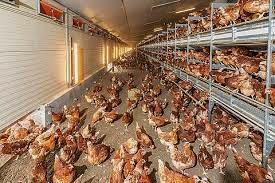 On September 27th, USPOULTRY and the USPOULTRY Foundation requested research pre-proposals from colleges and institutions through November 1st dealing with methods to improve egg-shell quality in flocks housed in alternative systems to cages.
On September 27th, USPOULTRY and the USPOULTRY Foundation requested research pre-proposals from colleges and institutions through November 1st dealing with methods to improve egg-shell quality in flocks housed in alternative systems to cages.
It is generally accepted that the 28.5 percent of the national flock housed in either aviaries, floor housing or other systems are producing eggs with higher downgrades compared to eggs from cages. This said there are no quantified and reliable standards. A logical starting point would be to assess the scope and intensity of the problem that can range from 5 to 15 percent of eggs laid. There are wide differences among systems and complexes and the need for structured research is self-evident. Areas of concern include floor eggs that are downgraded as a result of shell damage and soiling and induced mechanical shell defects.
 At the present time, floor eggs are partly controlled by applying various combinations of lighting and confinement through the post-transfer training period. Subject to the availability of labor, floor eggs are manually collected more frequently during the first four weeks of production. USPOULTRY is also questioning whether nutrition or management changes can be effected to optimize saleable eggs from a flock.
At the present time, floor eggs are partly controlled by applying various combinations of lighting and confinement through the post-transfer training period. Subject to the availability of labor, floor eggs are manually collected more frequently during the first four weeks of production. USPOULTRY is also questioning whether nutrition or management changes can be effected to optimize saleable eggs from a flock.
It is timely that research should be directed towards aspects of shell quality in cage-free systems. It would be best to gather information from as broad a cross section of the industry as possible to define areas of concern and to suggest possible areas of research. Initial concentration on any one aspect would be counterproductive since the problem of shell downgrades is frequently multifactorial in origin influenced by rearing of pullets and their transition to lay, the design of equipment, management practices with specific reference to intensity and location of lighting in modules and aisles. Factors including nutrition and genetics are in more probability of less importance to the problem given the ability of hens to produce shells of adequate quality in cages when fed standard diets with respect to mineral and vitamin content and additives.